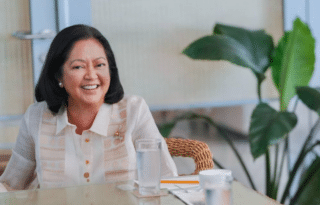The country’s dollar reserves rose to their highest level in history for the 13th consecutive month at the end of October due to the central bank’s currency market operations and the national government’s foreign loans.
In a statement, the Bangko Sentral ng Pilipinas (BSP) said its gross international reserves, based on preliminary data, rose by $2.27 billion to $103.81 billion as of end-October 2020 from the previous month’s $100.44 billion.
“The month-on-month increase in the [dollar reserve] level reflected inflows mainly from the BSP’s foreign exchange operations, national government’s foreign currency deposits with the central bank and revaluation gains on the agency’s gold holdings resulting from the increase in the price of gold in the international market,” it said.
These inflows were partly offset, however, by the foreign currency withdrawals made by the national government to pay its foreign currency obligations.
Adequate external buffer
The central bank said that at this level, the country’s foreign exchange reserves represented a more than adequate external liquidity buffer, which can cushion the domestic economy against external shocks.
This buffer is equivalent to 10.3 months’ worth of imports of goods and payments of services and primary income. Moreover, it is also about 9.3 times the country’s short-term external debt based on original maturity and 5.4 times based on residual maturity.
By convention, dollar reserves are viewed to be adequate if it can finance at least three-months’ worth of the country’s imports of goods and payments of services and primary income.
Similarly, the net international reserves, which refer to the difference between the BSP’s gross reserves and total short-term liabilities, increased by $3.37 billion to $103.8 billion as of end-October 2020 from the end-September 2020 level of $100.43 billion.
From only $3.2 billion in 1980—and then again being nearly depleted during the 1997 East Asian financial crisis —the Philippines’ stash of foreign currency held by the central bank rose steadily during the last 40 years to reach last month’s historic milestone.
BSP Gov. Benjamin Diokno had earlier predicted that the dollar reserves would breach the $100-billion mark and said that this level would remain robust in the near term with exports, remittances and investments rebounding amid the gradual opening of business sectors across the globe.
Diokno said that a further increase in the country’s dollar reserves would also be made possible by the central bank’s recent decision to actively participate in the gold trading market, given the rise in the price of the precious metal to historic highs.
He explained that the policy-making Monetary Board decided to shift from passive to active trading largely because of the change in the price dynamics of gold.
The amended central bank law also made BSP gold purchases from small miners more attractive.
JOIN THE IN-DEPTH DISCUSSION
business.inquirer.com.ph


